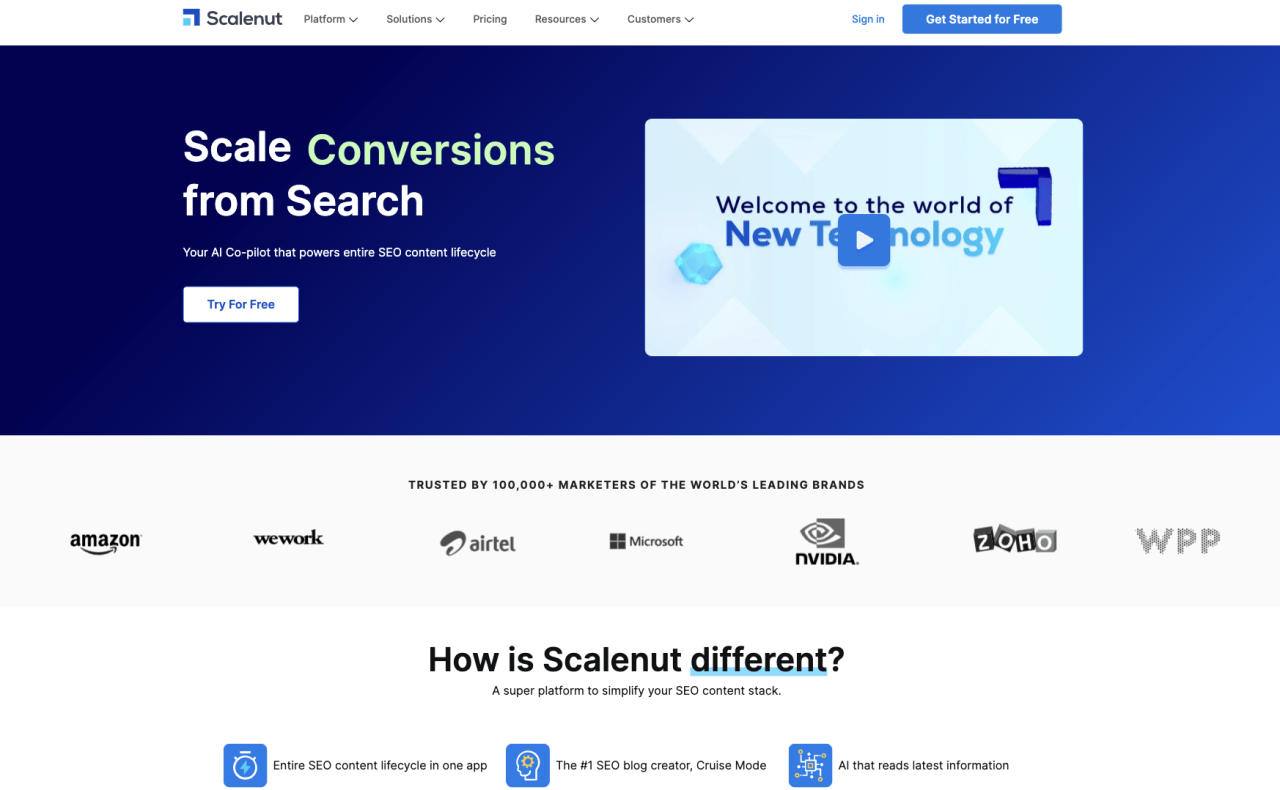Cost-effective AI tools are transforming industries, offering powerful capabilities without breaking the bank. This guide explores various strategies for identifying, implementing, and managing affordable AI solutions, balancing functionality with budgetary constraints. We’ll delve into free and open-source options, cloud-based services, and crucial factors for making informed decisions about AI tool selection.
From understanding different pricing models and minimizing operational costs to calculating return on investment (ROI) and addressing ethical considerations, we aim to provide a comprehensive overview of navigating the landscape of cost-effective AI. This guide is designed for businesses and individuals seeking to leverage the power of AI without significant financial burdens.
Defining “Cost-Effective”

Determining the cost-effectiveness of AI tools requires a nuanced understanding of various contributing factors and pricing models. It’s not simply about the initial purchase price; long-term operational costs and return on investment (ROI) are equally crucial considerations. A seemingly inexpensive tool might prove costly in the long run due to hidden fees or limitations, while a more expensive option could offer superior efficiency and ultimately save money.
The overall cost of AI tools is a multifaceted issue, encompassing several key components. Initial setup costs, including software licenses, hardware requirements (powerful CPUs, GPUs, and potentially specialized AI accelerators), and any necessary data integration or migration expenses, represent a significant initial investment. Ongoing operational costs involve subscription fees (if applicable), cloud computing expenses (for processing and storage), maintenance and updates, and the salaries of personnel needed to manage and utilize the AI system. Finally, the cost of data acquisition, cleaning, and labeling, often a substantial and ongoing expense, cannot be overlooked. These factors collectively determine the true cost of ownership over the AI tool’s lifespan.
AI Tool Pricing Models
Different vendors employ various pricing strategies to monetize their AI tools. Subscription models offer a predictable monthly or annual fee, providing access to the software and often including updates and support. This approach is beneficial for consistent usage, offering predictable budgeting. Pay-as-you-go models, on the other hand, charge based on usage, such as the number of processed images, queries answered, or API calls made. This model suits businesses with fluctuating needs, allowing them to pay only for the resources consumed. Some providers offer hybrid models, combining subscription fees with usage-based charges, allowing for a balance between predictability and flexibility. For example, a basic subscription might provide limited usage, while exceeding those limits triggers additional pay-per-use charges. A large language model (LLM) API, for instance, might charge per token processed, making the cost directly proportional to the amount of text processed.
Long-Term Cost Implications, Cost-effective AI tools
The long-term cost implications of different pricing structures can vary significantly. A subscription model, while offering predictable monthly costs, might prove more expensive over the long run if usage is low. Conversely, a pay-as-you-go model can be initially cheaper but may lead to unpredictable and potentially higher expenses if usage unexpectedly increases. The choice depends on the anticipated usage patterns and the importance of budget predictability. Consider a company using an AI-powered customer service chatbot. A subscription model offers a fixed cost, regardless of customer interaction volume. However, a pay-per-use model, charging per interaction, might be more cost-effective during periods of low customer engagement but significantly more expensive during peak seasons. Careful forecasting and analysis of usage patterns are vital for making informed decisions about the most cost-effective pricing model.
Cloud-Based AI Services: Cost-effective AI Tools

Cloud-based AI services offer a compelling alternative to on-premise solutions, particularly for businesses seeking agility and cost-effectiveness. This approach leverages the infrastructure and expertise of major cloud providers, allowing organizations to access powerful AI tools without the significant upfront investment in hardware and specialized personnel required for an on-premise setup. However, understanding the nuanced cost structures and potential drawbacks is crucial for making an informed decision.
The primary cost benefit of cloud-based AI services lies in their pay-as-you-go pricing models. Instead of investing heavily in infrastructure that may sit idle for periods, businesses only pay for the computing resources they consume. This scalability allows for efficient resource allocation, adapting to fluctuating demands and minimizing wasted expenditure. Furthermore, cloud providers often offer pre-trained models and APIs, reducing the need for extensive in-house development, saving time and personnel costs. However, potential drawbacks include vendor lock-in, reliance on internet connectivity, and potential security concerns related to data storage and access. The total cost of ownership can also be complex to predict, influenced by factors such as data transfer costs and the specific AI services utilized.
Cost Comparison Model for Cloud AI Deployment
This section Artikels a simplified cost comparison model for deploying a hypothetical AI solution – a sentiment analysis model for customer feedback – across three major cloud providers: AWS, Google Cloud, and Azure. The model considers compute costs (virtual machines), storage costs (for training data and model storage), and API usage costs (for the sentiment analysis service). Note that this is a simplified model and actual costs will vary based on several factors, including the size and complexity of the model, the volume of data processed, and the chosen instance types.
| Cost Component | AWS (Estimated) | Google Cloud (Estimated) | Azure (Estimated) |
|---|---|---|---|
| Compute (VM) – Training | $500 | $450 | $480 |
| Compute (VM) – Inference | $150 | $120 | $140 |
| Storage | $50 | $40 | $60 |
| API Usage (Sentiment Analysis) | $200 | $180 | $220 |
| Total Estimated Cost | $900 | $790 | $900 |
The above figures are illustrative and based on estimated usage for a small-scale deployment. Actual costs can significantly differ based on specific requirements. For instance, processing larger datasets would increase compute and storage costs proportionally.
Comparison of AI Services Pricing and Features
Major cloud providers offer comparable AI services, but their pricing structures and specific features vary. For example, all three providers offer pre-trained models for sentiment analysis, but their pricing models differ based on the number of requests, the model’s complexity, and the volume of data processed. AWS offers a wide array of services, often providing granular control and customization, which can lead to more complex pricing. Google Cloud Platform emphasizes ease of use and integration with other Google services, potentially leading to simpler pricing for certain use cases. Azure presents a balanced approach, often offering competitive pricing and a strong suite of integrated services. The best choice depends on specific needs and preferences. A thorough evaluation of each provider’s offerings, considering both cost and functionality, is recommended before making a decision.
Ultimately, the journey towards leveraging cost-effective AI involves careful planning, strategic selection, and ongoing optimization. By understanding the various pricing models, exploring free and open-source options, and prioritizing ethical considerations, organizations can harness the power of AI while maintaining fiscal responsibility. This guide has equipped you with the knowledge to make informed decisions, paving the way for successful and sustainable AI implementation.
Finding cost-effective AI tools can be challenging, but focusing on specific needs helps. For example, if your project involves text analysis, exploring efficient options within natural language processing is key. A great resource for learning more about available tools is this comprehensive guide on Natural language processing (NLP) tools. Ultimately, selecting the right NLP tools contributes significantly to keeping your overall AI project budget-friendly.
Cost-effective AI tools are becoming increasingly crucial for businesses, but their implementation necessitates robust security measures. A key aspect of this involves understanding and implementing strong Cloud data security best practices , ensuring sensitive data remains protected even with budget-conscious AI solutions. Ultimately, responsible deployment of cost-effective AI tools hinges on prioritizing data security.
